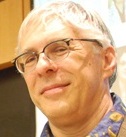1.1: The Interconnectedness of Science
- Page ID
- 3900
At one point in time, the study of biology, chemistry, physics, geology, and astronomy appeared to be distinct, but each has implications for the others; they all deal with the real world. In particular, it is clear that biological systems obey the laws and rules established by physics and chemistry. As we will see, it was once thought that there were aspects of biological systems that somehow transcended physics and chemistry, a point of view known generically as vitalism. If vitalism had proven to be correct, it would have forced a major revision of chemistry and physics. As an analogy, the world of science is like an extremely complex crossword puzzle, where the answer to one question must be compatible with the answers to all of the others.15 Alternatively, certain questions (and their answers) once thought to be meaningful can come to be recognized as irrelevant or meaningless. For example, how many angels can dance on the head of a pin is no longer considered a scientific question.
What has transpired over the years is that biological processes ranging from the metabolic to the conscious have been found to be consistent with physicochemical principles. What makes biological processes different is that they are the product of evolutionary processes influenced by historical events that stretch back in an uninterrupted “chain of being” over billions of years. Moreover, biological systems in general are composed of many types of molecules, cells, and organisms thatinteract in complex ways. All this means is that while biological systems obey physicochemical rules, their behavior cannot be predicted based these rules. It may well be that life, as it exists on Earth, is unique. The only way we will know otherwise is if we discover life on other planets, solar systems, galaxies, and universes (if such things exist), a seriously non-trivial but totally exciting possibility.
At the same time, it is possible that studies of biological phenomena could lead to a serious rethinking of physicochemical principles. There are in fact research efforts into proving that phenomena such as extrasensory perception, the continuing existence of the mind/soul after death, and the ability to see the future or remember the (long distant) past are real. At present, these all represent various forms of pseudoscience (and most likely, various forms of self-delusion and wishful thinking), but they would produce a scientific revolution if they could be shown to be real, that is, if they were reproducible and based on discernible mechanisms with explicit implications and testable predictions. This emphasizes a key feature of scientific explanations: they must produce logically consistent, explicit, testable, and potentially falsifiable predictions. Ideas that can explain any possible observation or are based on untestable assumptions, something that some would argue is the case for string theory in physics, are no longer science, whether or not they are “true” in some other sense.16
Contributors and Attributions
Michael W. Klymkowsky (University of Colorado Boulder) and Melanie M. Cooper (Michigan State University) with significant contributions by Emina Begovic & some editorial assistance of Rebecca Klymkowsky.


